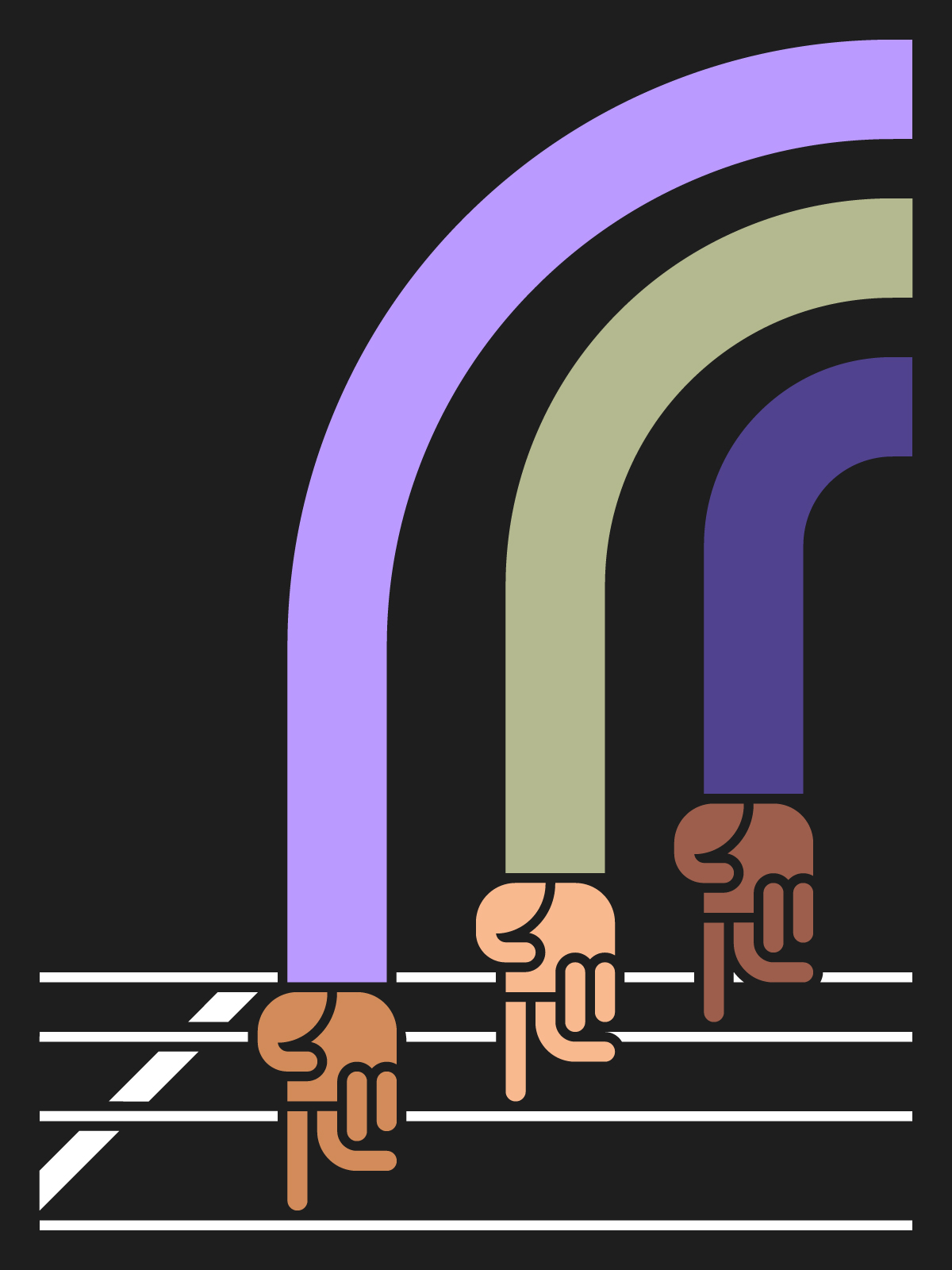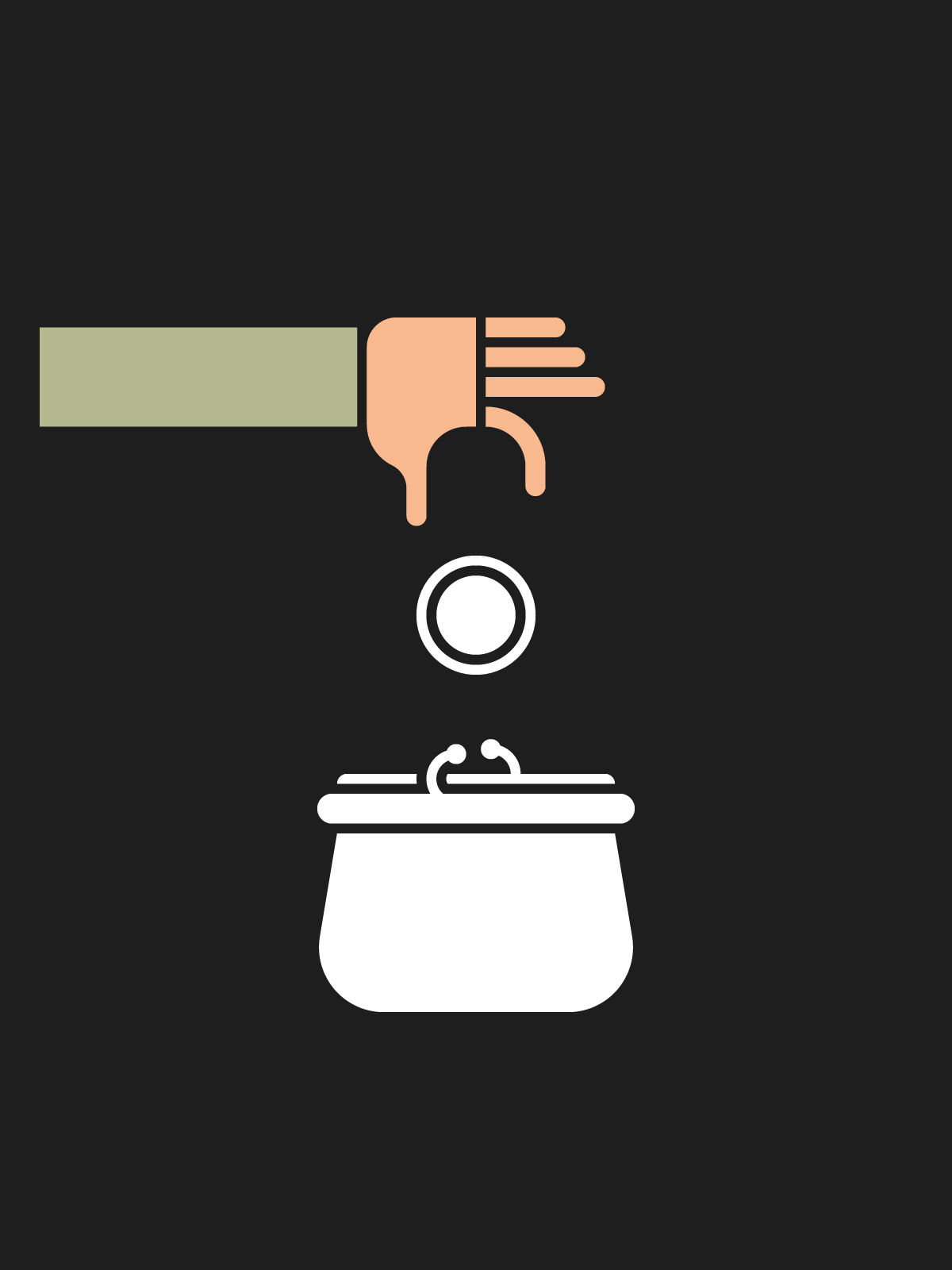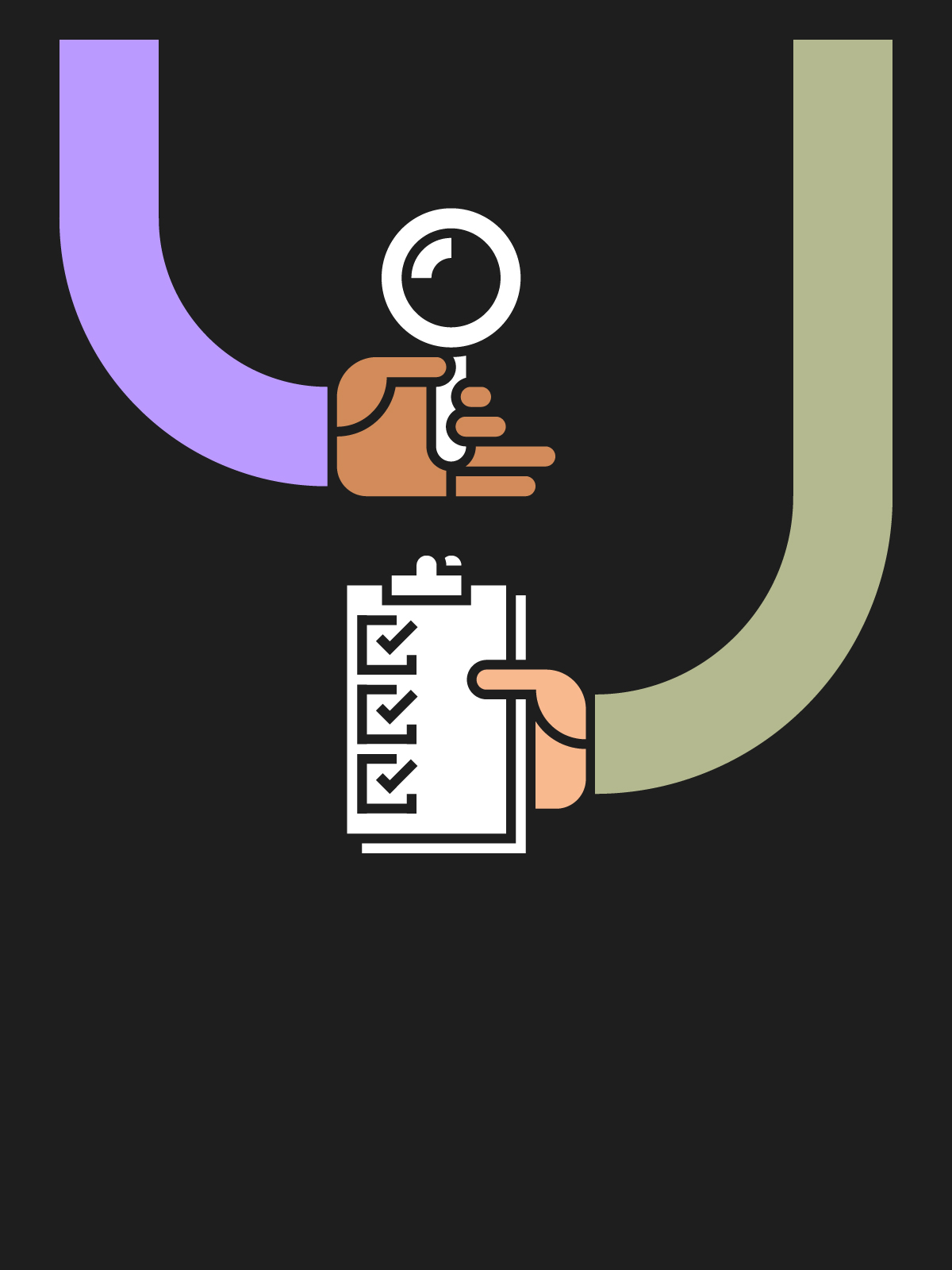How we built the 10-day Brand Sprint methodology — reflections five years on
The spark of an idea: branding at speed
My motivation for creating a process to craft brands quickly goes back more than a decade. Around 2013, I was asked to design a brand for a printing company in two weeks. As someone who loves a challenge, I accepted the brief. The end result wasn’t terrible, but it wasn’t great either. It didn’t hit the right marks, it wasn’t polished enough and it didn’t resonate with the client. It was a failure.
I focused on the mistakes, trying to understand where I had gone wrong and how the process could be improved.
How can I design coherent, credible brands at speed without compromising on depth?
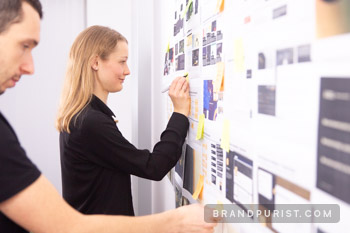
A missing holistic approach
Fast-forward to 2020 and the COVID upheaval. Finally, I had the time to explore the idea seriously. Sprints were already established in product design and, by then, Google had popularised their three-hour brand sprint — a promising first step, but limited in scope.
Without a clear blueprint for a holistic brand sprint covering all aspects of brand development — strategy, naming, visuals and messaging — I set out to build one.
Developing the methodology
Developing this service demanded I refresh everything I knew about branding. I re-read my old textbooks, revisited every project I had done and replayed them in my head. Could they have worked as a sprint? What in my process could be adapted?
The biggest challenge was confronting a deeply held belief: branding takes time, it shouldn’t be rushed. I had to accept that this isn’t always true: weeks of research then months of strategy and careful design refinement doesn’t necessarily lead to the best results. While the sprint methodology isn’t right for every project, there are many cases where overthinking destroys morale and momentum. I reframed the concept in my mind:
Brand Sprints are not about rushing branding. They’re about making branding streamlined and decisive.
I built a massive Google Slide deck with exercises covering every aspect of brand development: competitor analysis, audience segmentation and personas, journey mapping, mood boards, messaging templates — everything but the kitchen sink.
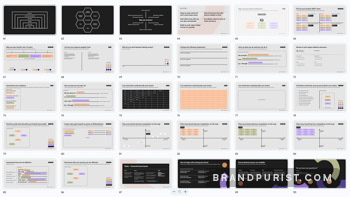
Streamlining the process: early insights
My next job was whittling the slides down to the essentials. As I did this, two insights became clear to me:
- You can only progress quickly with deep client involvement.
- No matter how fast you work, certain elements of brand development cannot be skipped.
Both points were informed by my early failure with the printing company. I had been left with only a brief and no way to ask questions. I wanted Brand Sprints to be the exact opposite of this experience.
It’s immersive and collaborative. Clients are hands-on with their brand, shaping it while I align fully with their vision.
We don’t compromise on strategic depth. We still ask difficult questions and go through thorough exercises. It’s intense and demanding, but always worth it.
Once I had curated the exercises and structured the tasks across days, it was time to put the Brand Sprint methodology to the test. Exciting as it was, doubts lingered: would it actually work? My greatest fear was the creative aspect. What happens when time pressure and quality demands weigh on creativity?
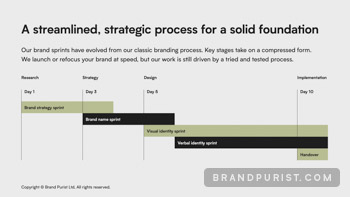
Putting the Brand Sprint to the test
I’d be lying if I said it wasn’t stressful, especially during my first few sprints. But I now know that creativity can thrive under pressure. The sprint provides structure, goals and boundaries. The “crisis” of time pressure channels creativity and delivers results.
After years of running brand sprints, I have also learned:
- Branding is still driven by intuition. Strategy and research are vital, but without a human touch, the brand lacks soul.
- You have to embrace the unknown. A sprint begins without knowing exactly where it will end. Let one decision lead to the next; let the brand take shape naturally.
- Naming is difficult. Even with unlimited time, it’s hard. Trademark and domain restrictions make it constrained. Yet, during the sprint, we still consistently find evocative, distinct names. It’s not impossible.
- The sprint is not just a tool for speed, but for powerful collaboration too. It’s a shared journey with clients to build alignment and a sense of ownership. Their engagement allows the brand to truly reflect their vision while keeping momentum.
Five years on, brand sprints have grown in visibility. Perhaps they’re trendy, perhaps overused. For me, they’ve enabled founders to realise their visions and go to market quickly, and they’ve pushed me to grow as a designer, strategist and partner. I feel a genuine sense of achievement in pioneering this methodology, even on our small scale.
The sprint isn’t a shortcut — it’s a catalyst.
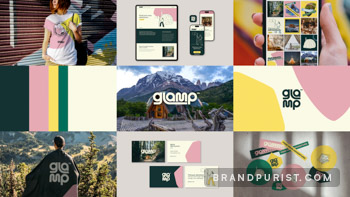
Key learnings from five years of brand sprints
-
Speed doesn’t equal compromise
The streamlined process allows decisive, high-quality branding without sacrificing depth. Collaboration is essential
Immersive client involvement delivers alignment, ownership and clarity.Structure supports creativity
Clear boundaries, tasks and timelines focus creative energy effectively.-
Intuition matters
Data and research guide, but human judgment and instinct breathe life into a brand. -
Embrace uncertainty
No one has all the answers; let the process unfold, making one decision at a time. -
Critical elements can’t be skipped
Research, strategy, messaging and design essentials remain non-negotiable. -
Naming is always challenging
Constraints are real, but thoughtful frameworks help achieve distinct, memorable outcomes. -
Pressure can catalyse creativity
Manageable time constraints encourage problem-solving and innovation. -
Iterate and reflect
Testing, learning and adjusting the sprint improves both process and results.

